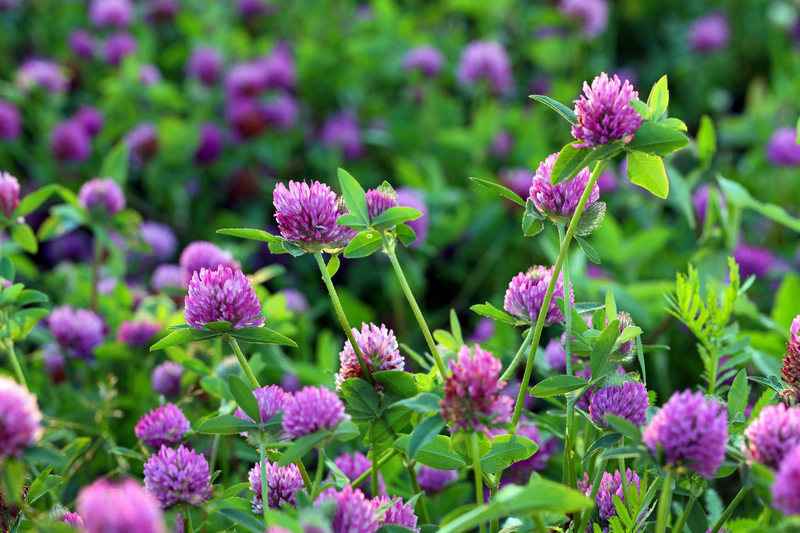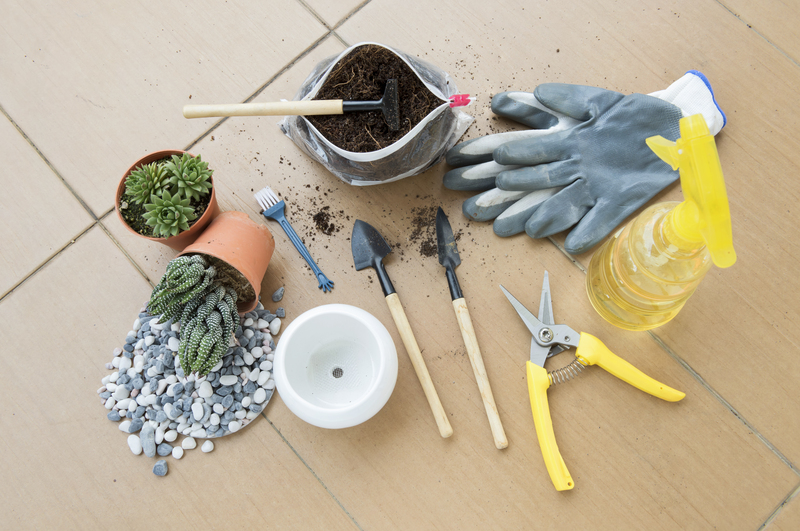Maintaining Neutral pH in Grass
Posted on 20/05/2025
Maintaining a neutral pH level in grass is crucial for the health and appearance of your lawn. Achieving a well-balanced pH allows grass to absorb nutrients effectively, keeps weeds at bay, and promotes optimal growth. In this article, we'll delve into the importance of pH balance, the problems associated with both acidic and alkaline soils, and the best practices for maintaining neutral pH in your grass.
Understanding Soil pH
Soil pH is a measure of the soil's acidity or alkalinity, represented on a scale of 0 to 14, with 7 being neutral. Values below 7 indicate acidic soil, while those above 7 signify alkaline soil. Grass generally thrives in a slightly acidic to neutral range, approximately between 6.0 and 7.0.

The Importance of Maintaining Neutral pH
A neutral pH in soil ensures that grass can adequately take up essential nutrients. When soil pH deviates from this range, it can lead to nutrient deficiencies or toxicities, weakening the grass and making it more susceptible to diseases, pests, and environmental stress.
Problems Associated with Acidic Soil
Soil that is too acidic (pH below 6.0) can create several problems for grass:
Nutrient Deficiency: Essential nutrients like nitrogen, phosphorus, and potassium are less available in acidic soils, which can stunt grass growth and reduce its overall health.
Toxic Elements: Acidic soils may contain toxic levels of elements like aluminum and manganese, which can severely damage grass root systems.
Increased Weed Growth: Certain weeds, such as moss and sorrel, thrive in acidic conditions, often outcompeting grass for space and resources.
Problems Associated with Alkaline Soil
Similarly, soil that is too alkaline (pH above 7.0) also poses challenges:
Nutrient Lock-Up: In alkaline soils, micronutrients such as iron, manganese, and zinc become less available, leading to deficiencies that manifest as yellowing leaves or poor grass growth.
Poor Microbial Activity: Beneficial soil microbes that help decompose organic matter and release nutrients may not function optimally in alkaline conditions.
Increased Salt Levels: Alkaline soils often have higher concentrations of salts, which can dehydrate grass and lead to brown patches.
Steps to Test Soil pH
Before taking any corrective measures, it's essential to know the current pH level of your soil. Here's how you can test it:
Soil Test Kit: Purchase a soil test kit from a garden supply store. Follow the instructions to collect soil samples from various parts of your lawn and determine the pH level.
Professional Lab Test: For more accurate results, you can send soil samples to a professional laboratory, which will provide a detailed pH report along with recommendations.
Methods to Adjust Soil pH
Depending on your soil's current pH level, you may need to raise or lower it to achieve a neutral range. Here are some effective methods:
Raising Soil pH (Reducing Acidity)
If your soil is too acidic, you can raise its pH using the following methods:
Lime Application: Lime (calcium carbonate) is the most common amendment used to increase soil pH. The amount needed will depend on the soil type and current pH level. Generally, sandy soils require less lime than clay soils.
Wood Ash: Wood ash can also be used to raise soil pH, although it should be applied sparingly and mixed well with the soil to avoid overaccumulation of salts.
Dolomitic Lime: If your soil is also deficient in magnesium, consider using dolomitic lime, which contains both calcium and magnesium.
Lowering Soil pH (Reducing Alkalinity)
If your soil is too alkaline, consider the following approaches to lower its pH:
Sulfur: Elemental sulfur is an effective amendment for lowering soil pH. It must be applied gradually and mixed thoroughly, as it takes time to react with the soil.
Iron Sulfate: Iron sulfate can provide the dual benefits of reducing pH and supplying iron, which is often deficient in alkaline soils.
Organic Matter: Adding organic materials such as compost, peat moss, or pine needles can help acidify the soil over time. These materials decompose to form organic acids, gradually lowering the pH.
Regular Maintenance for Optimal pH
Achieving the desired pH is just the first step; maintaining it requires ongoing effort. Here are some regular maintenance practices to keep soil pH in check:
Periodic Testing: Conduct soil pH tests annually to monitor pH changes and adjust your soil management practices accordingly.
Balanced Fertilization: Use fertilizers that supply your lawn with essential nutrients without significantly altering soil pH. Opt for balanced fertilizers or those specifically designed for your grass type.
Organic Matter Addition: Regularly add organic matter to your lawn to improve soil structure and buffer pH fluctuations.

Choosing the Right Grass Species
Not all grass species have the same pH preferences. Selecting a grass species well-suited to your soil's existing pH conditions can make maintenance much easier. Here's a general guide to grass species and their pH preferences:
Cool-Season Grasses
Kentucky Bluegrass: Thrives in slightly acidic to neutral soils (pH 6.0-7.0).
Fescue: Adaptable to a wide range of pH levels but performs best in slightly acidic soils (pH 5.5-7.0).
Perennial Ryegrass: Prefers neutral to slightly acidic soils (pH 6.0-7.0).
Warm-Season Grasses
Bermudagrass: Tolerates a wide pH range but thrives in slightly acidic to neutral soils (pH 5.8-7.0).
St. Augustinegrass: Prefers slightly acidic soils (pH 5.0-7.5).
Buffalograss: Tolerant of both slightly acidic and alkaline conditions (pH 5.5-7.5).
Conclusion
Maintaining a neutral pH in grass is essential for ensuring healthy, robust growth and a beautiful lawn. By understanding the importance of soil pH, regularly testing your soil, and applying the appropriate amendments, you can cultivate an environment where grass thrives. Regular maintenance and careful species selection further enhance your efforts, creating a lush, green landscape that enhances both the aesthetic and ecological value of your property.






 Certified and experienced landscapers
Certified and experienced landscapers



 Get a Quote
Get a Quote